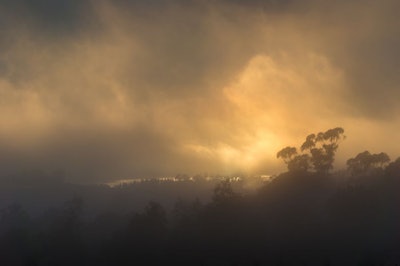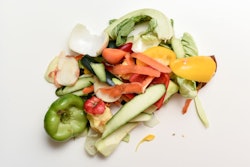
Impact of wildfire smoke exposure persisted for days after the smoke dispersed, study says
Heat isn’t the only summertime hazard that may affect animal production. An emerging area of research suggests wildfire smoke may also have an impact on dairy cows.
According to a study out this month from the University of Idaho, cows exposed to a weeklong smoke event in 2020 produced less milk throughout that week and in the days that followed. The decrease in production was roughly proportional to the amount of smoke in the air, though it’s not yet clear exactly why the smoke affected milk production, according to Amy Skibiel, an assistant professor of lactation physiology at Idaho State University.
Skibiel said she was researching heat stress in diary cattle when the idea of looking at wildfire smoke’s impact on the cows occurred to her. She had recently moved to Idaho at the time, she said, and was talking to a colleague about how the state seemed to be inundated by wildfire smoke from other regions each year.
“I saw pictures of this area being blanketed in these particulates and smoke,” Skibiel said, “and we started to think about what affect that might have on the animals.”
Skibiel and her colleagues initially prepared to take measurements during 2019, but they were unable to complete their experiment due to a lack of smoke that year. The weather obliged in 2020.
During the week-long smoke event during September of that year, the exposed dairy cows not only produced less milk but also lost weight and body condition in response to smoke exposure, Skibiel said. The loss of body condition could be related to the reduced milk production, she said, but the research team did not collect data on feed intake and so could not determine if the losses were related to reduced appetite.
Blood samples collected during the smoke event also revealed changes in immune cell circulation in the blood stream, Skibiel said.
“We’re not completely sure what all those changes mean yet,” she said, but the result could be indicative of an allergic-type response similar to what is experienced by humans who are exposed to wildfire smoke.
It’s also not yet clear what approach producers might be able to adopt in order to reduce the impact of wildfire smoke on their animals. While it’s possible that adjusting the diet or even installing some kind of air filter on dairy barns could prove effective, Skibiel said these measure would need to be tested in the future.
“This research is so much in it’s infancy that we don’t have a good strategy to provide to producers yet,” she said, adding that she would like to investigate the topic further if she is able to find funding for additional research. “These projects are just the first steps in identifying if there is a problem.”









